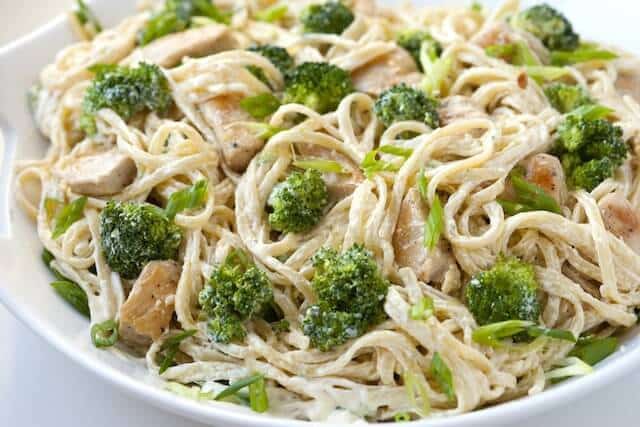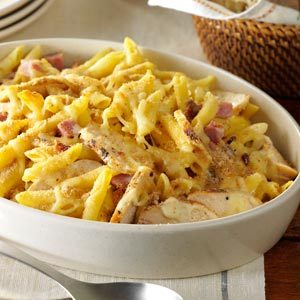Source:- Google.com.pk
Various accounts exist as to when and how the dish originated, but it likely dates to the mid-twentieth century. The earliest known mention of it is in Raffaele La Capria’s Ferito a Morte (Mortal Wound), a 1961 Italian novel which mentions "spaghetti alla puttanesca come li fanno a Siracusa (spaghetti alla puttanesca as they make it in Syracuse)". The sauce became popular in the 1960s, according to the Professional Union of Italian Pasta Makers.The 1971 edition of the Cucchiaio d’argento (The Silver Spoon), one of Italy's most prominent cookbooks, has no recipe with this name, but two which are similar: The Neapolitan spaghetti alla partenopea, is made with anchovies and generous quantities of oregano; while spaghetti alla siciliana is distinguished by the addition of green peppers.In a 2005 article from Il Golfo—a daily newspaper serving the Italian islands of Ischia and Procida—Annarita Cuomo asserted that sugo alla puttanesca was invented in the 1950s by Sandro Petti, co-owner of Rancio Fellone, a famous Ischian restaurant and nightspot.According to Cuomo, Petti's moment of inspiration came when—near closing one evening—Petti found a group of customers sitting at one of his tables. He was low on ingredients and so told them he didn't have enough to make them a meal. They complained that it was late and they were hungry. "Facci una puttanata qualsiasi," or "Make any kind of garbage," they insisted.aPetti had nothing more than four tomatoes, two olives and some capers—the basic ingredients for the sugo, “So I used them to make the sauce for the spaghetti,” Petti told Cuomo. Later, Petti included this dish on his menu as spaghetti alla puttanesca.The sauce alone is called sugo alla puttanesca in Italian. Recipes may differ according to preferences; for instance the Neapolitan version is prepared without anchovies, unlike the version popular in Lazio, and chili peppers are sometimes added. In most cases, however, the sugo is a little salty (from the capers, olives, and anchovies) and quite fragrant (from the garlic). Traditionally, the sauce is served with spaghetti, although it also goes well with penne, bucatini, linguine and vermicelli.Chopped garlic and anchovies (omitted in the Neapolitan version) are sautéed in olive oil. Chopped chili peppers, olives, capers, diced tomatoes and oregano are added along with salt and black pepper to taste. The cook then reduces this mixture by simmering and pours it over spaghetti cooked al dente. The final touch is a topping of parsley.Carbonara is an Italian pasta dish from Lazio, and more specifically Rome,based on eggs, cheese (Pecorino Romano or Parmigiano-Reggiano), bacon (guanciale or pancetta), and black pepper. Spaghetti is usually used as the pasta, however, fettuccine, rigatoni, linguine or bucatini can also be used. The dish was created in the middle of the 20th century.The pork is cooked in fat, which may be olive oil, lard, or less frequently butter. The hot pasta is combined with a mixture of raw eggs, cheese, and a fat (butter, olive oil, or cream)from additional direct heat to avoid coagulating the egg, either in the pasta pot or in a serving dish. The eggs should create a creamy sauce, and not curdlGuanciale is the most commonly used meat in Italy, but pancettaand local bacon are also used.Versions of this recipe may differ in how the egg is added: some people use the whole egg, while other people use only the yolk; intermediate versions with some whole eggs and some yolkare also possible.Cream is not common in Italian recipes but is often used elsewhere.Garlic is similarly found mostly outside Italy.Other variations on carbonara outside Italy may include peas, broccoli, mushrooms, or other vegetables.Many of these preparations have more sauce than the Italian versions.As with many other dishes, ersatz versions are made with commercial bottled sauces.As with many recipes, the origins of the dish and its name are obscure.The dish forms part of a family of dishes involving pasta with bacon, cheese, and pepper, such as spaghetti alla gricia. Indeed, it is very similar to the southern Italian pasta cacio e uova, dressed with melted lard and mixed eggs and cheese.There are many theories for the origin of the name, which may be more recent than the dish itself Since the name is derived from carbonaro (the Italian word for charcoal burner), some believe the dish was first made as a hearty meal for Italian charcoal workers. In parts of the United States the etymology gave rise to the term "coal miner's spaghetti". It has even been suggested that it was created as a tribute to the Carbonari ("charcoalmen"), a secret society prominent in the early, repressed stages of Italian unification. It seems more likely that it is an urban dish from Rome,although it has nothing to do with the homonym restaurant in the Roman Campo de' Fiori square.Pasta alla Carbonara was included in Elizabeth David's Italian Food, an English-language cookbook published in Great Britain in 1954. However, the dish is not present in Ada Boni's 1927 classic La Cucina Romana and is unrecorded before the Second World War. It was first described after the war as a Roman dish, when many Italians were eating eggs and bacon supplied by troops from the United States.
Recipes For Pasta And Chicken Recipe Of Pasta In Urdu By Chef Zakir In Hindi Salad With White Sauce In Urdu In Indian Style In Red Sauce Photos
Recipes For Pasta And Chicken Recipe Of Pasta In Urdu By Chef Zakir In Hindi Salad With White Sauce In Urdu In Indian Style In Red Sauce Photos Recipes For Pasta And Chicken Recipe Of Pasta In Urdu By Chef Zakir In Hindi Salad With White Sauce In Urdu In Indian Style In Red Sauce Photos Recipes For Pasta And Chicken Recipe Of Pasta In Urdu By Chef Zakir In Hindi Salad With White Sauce In Urdu In Indian Style In Red Sauce Photos Recipes For Pasta And Chicken Recipe Of Pasta In Urdu By Chef Zakir In Hindi Salad With White Sauce In Urdu In Indian Style In Red Sauce Photos Recipes For Pasta And Chicken Recipe Of Pasta In Urdu By Chef Zakir In Hindi Salad With White Sauce In Urdu In Indian Style In Red Sauce PhotosRecipes For Pasta And Chicken Recipe Of Pasta In Urdu By Chef Zakir In Hindi Salad With White Sauce In Urdu In Indian Style In Red Sauce Photos Recipes For Pasta And Chicken Recipe Of Pasta In Urdu By Chef Zakir In Hindi Salad With White Sauce In Urdu In Indian Style In Red Sauce Photos Recipes For Pasta And Chicken Recipe Of Pasta In Urdu By Chef Zakir In Hindi Salad With White Sauce In Urdu In Indian Style In Red Sauce Photos Recipes For Pasta And Chicken Recipe Of Pasta In Urdu By Chef Zakir In Hindi Salad With White Sauce In Urdu In Indian Style In Red Sauce Photos Recipes For Pasta And Chicken Recipe Of Pasta In Urdu By Chef Zakir In Hindi Salad With White Sauce In Urdu In Indian Style In Red Sauce Photos
Recipes For Pasta And Chicken Recipe Of Pasta In Urdu By Chef Zakir In Hindi Salad With White Sauce In Urdu In Indian Style In Red Sauce Photos Recipes For Pasta And Chicken Recipe Of Pasta In Urdu By Chef Zakir In Hindi Salad With White Sauce In Urdu In Indian Style In Red Sauce Photos Recipes For Pasta And Chicken Recipe Of Pasta In Urdu By Chef Zakir In Hindi Salad With White Sauce In Urdu In Indian Style In Red Sauce Photos Recipes For Pasta And Chicken Recipe Of Pasta In Urdu By Chef Zakir In Hindi Salad With White Sauce In Urdu In Indian Style In Red Sauce Photos Recipes For Pasta And Chicken Recipe Of Pasta In Urdu By Chef Zakir In Hindi Salad With White Sauce In Urdu In Indian Style In Red Sauce PhotosRecipes For Pasta And Chicken Recipe Of Pasta In Urdu By Chef Zakir In Hindi Salad With White Sauce In Urdu In Indian Style In Red Sauce Photos Recipes For Pasta And Chicken Recipe Of Pasta In Urdu By Chef Zakir In Hindi Salad With White Sauce In Urdu In Indian Style In Red Sauce Photos Recipes For Pasta And Chicken Recipe Of Pasta In Urdu By Chef Zakir In Hindi Salad With White Sauce In Urdu In Indian Style In Red Sauce Photos Recipes For Pasta And Chicken Recipe Of Pasta In Urdu By Chef Zakir In Hindi Salad With White Sauce In Urdu In Indian Style In Red Sauce Photos Recipes For Pasta And Chicken Recipe Of Pasta In Urdu By Chef Zakir In Hindi Salad With White Sauce In Urdu In Indian Style In Red Sauce Photos










No comments:
Post a Comment